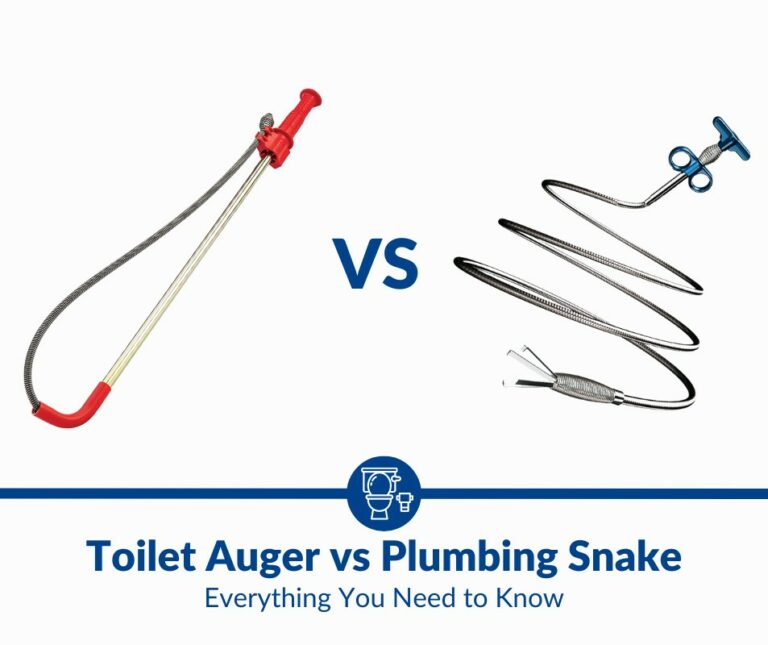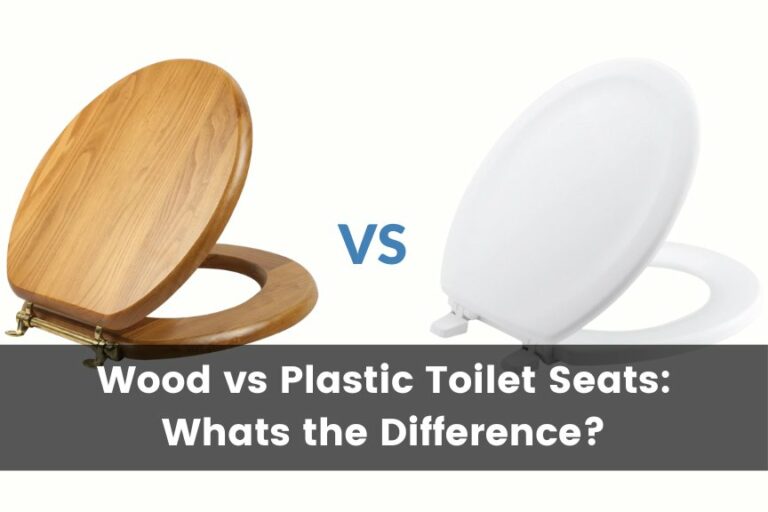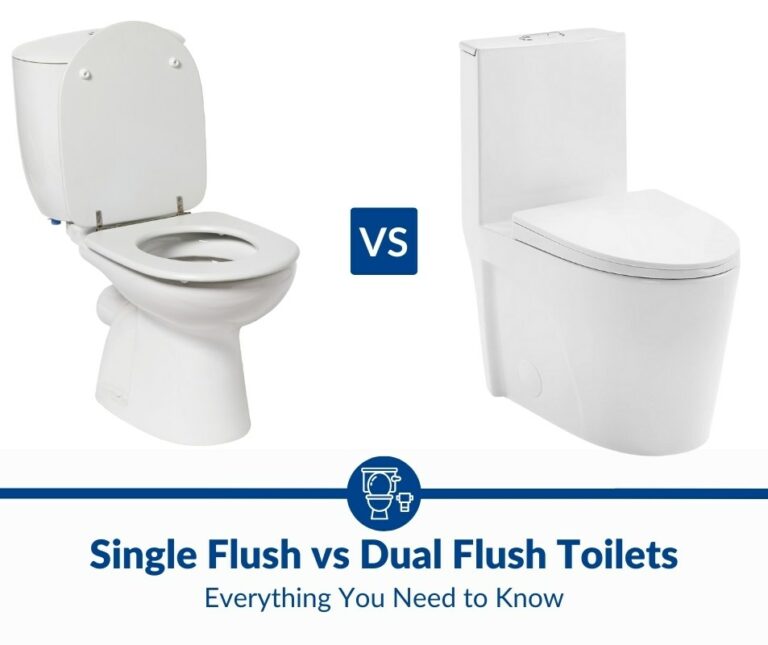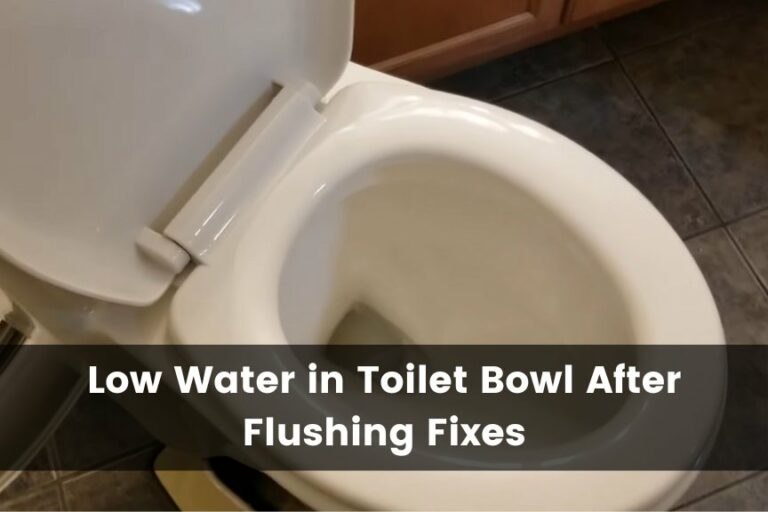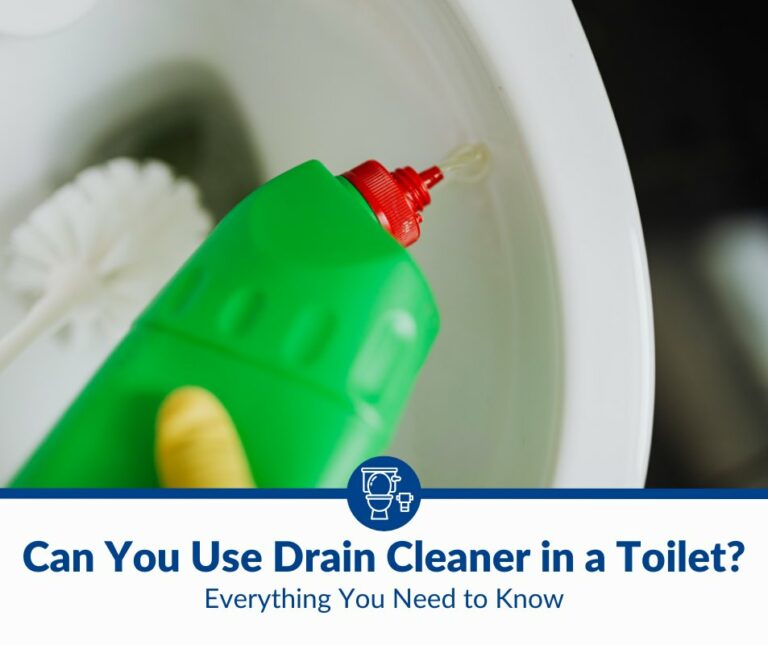Can You Use Drano in a Toilet?
Drano is a well-known chemical clog cleaner, so if your toilet is clogged, you might be tempted to reach for it to solve the issue. However, you shouldn’t use Drano in a toilet.
You can’t use Drano in a toilet because the harsh chemicals in Drano can cause PVC pipes to soften, damage or corrode older pipes, and crack the toilet’s porcelain bowl. There are also health risks associated with using Drano.
In the rest of this article, I’ll explain in detail why you should never use Drano in a toilet, and I’ll also offer suggestions for what to do instead. I’ll also give you recommendations on how to avoid getting a clog in the toilet in the first place.
Why You Shouldn’t Use Drano on a Toilet
Drano is one of the most well-known chemical clog cleaners on the market, so it may be what you think of when your toilet is clogged, and you want to fix it. However, there are many reasons why you shouldn’t use Drano in a toilet.
In short, you shouldn’t use Drano in a toilet because it is meant for sink clogs, not toilet clogs. The sink’s piping differs from a toilet’s, requiring different products.
Toilet pipes are constructed in an “S” shape to prevent sewer gases from entering your bathroom and create a siphon effect to help to flush. Sinks do not have this same shape, which makes it easier for Drano to reach the clog. If you use Drano in an “S” shape piping system, the substance might not even reach the clog, so it won’t be effective in clearing it.
Drano is designed to clear sink blockages, usually made of soap scum and other organic matter. The chemicals are effective at clearing out these blockages but not at clearing out human waste and toilet paper, which usually makes up toilet clogs.
Furthermore, Drano contains several harsh chemicals, including lye, aluminum, salt, bleach, and sodium nitrate. These chemicals react with each other and corrode organic materials, which breaks down even the toughest clogs. Here’s how it works:
- The lye decomposes all organic material, such as hair, dead skin cells, and grease.
- The aluminum heats the lye to almost boiling temperatures to speed up the process.
- The lye reacts with grease to create a soapy solution, which reacts with the aluminum again and creates hydrogen bubbles.
- The hydrogen bubbles loosen the clog even further.
This may seem great, but the product will ultimately do more harm than good to the toilet. First, the harsh chemicals in Drano can soften polyvinyl chloride (PVC) pipes, and then you’ll need to replace the piping, which is inconvenient and occasionally costly. Additionally, the chemicals can damage old and corroded pipes. In extreme cases, Drano can crack the toilet’s porcelain bowl, so you’ll need to replace the entire commode.
Replacing a toilet is costly: the average cost is $372, and it can be even more expensive, as much as $680 or more. Suddenly, a simple clog turns into a massive expense. This price doesn’t even include any damage or cleaning necessary to fix any flooding that may occur if the toilet breaks.
Not only is Drano potentially damaging to the toilet, but it can also be dangerous to you. There are serious health risks that come with using the harsh chemicals in Drano. If you were to try and plunge the clog after using Drano, some of the mixture could splash up and damage your skin or eyes. Direct contact with Drano leads to irritation and burning, and inhaling the gases can cause permanent lung damage in extreme cases.
Another risk is that if you use bleach to clean your toilet, it could react with Drano and produce toxic gases, including chloramines, that can damage your eyes, cause chest pain, and cause difficulty breathing.
Chloramine fumes can cause sneezing, congestion, choking, and wheezing. It is especially dangerous for people with asthma.
Finally, you shouldn’t use Drano because it harms the environment. Once the Drano goes through your plumbing system, it will enter the municipal sewer system, where it can harm plants, animals, and the local water supply. Just by using this harmful product, you can permanently damage an ecosystem.
What To Do Instead of Using Drano
You can do many things to get rid of a toilet clog instead of Drano, and these alternatives are more effective and less damaging to your toilet and your health. Here are some alternative options:
Use a Plunger
One of the most effective ways to get rid of a toilet clog is to use a plunger. A plunger is a simple, affordable tool you should always have because it can effectively eliminate a clog.
- Place the plunger over the toilet hole and pump it up and down rapidly.
- Flush to see if the clog is eliminated.
- If it’s not, keep pumping the toilet until it is cleared.
I recommend wearing long rubber gloves to prevent toilet water from splashing onto your skin.
I recommend using the MR. SIGA Store Toilet Plunger and Bowl Brush Combo from Amazon because the plunger is made with commercial-grade rubber that provides maximum plunging power. The handle also gives you a secure and comfortable grip to plunge more effectively. Finally, I like that this plunger has an efficient toilet brush with strong bristles to make your toilet as clean as possible.
Use a Toilet Auger
A toilet auger is an effective tool, essentially a specialized drain snake, that can unclog almost any blockage. Toilet augers are useful but can also scratch the inside of a toilet bowl, so you should be careful while using them. You should insert the auger into the toilet and remove it slowly.
Here’s how to use a toilet auger:
- Put on some rubber gloves.
- Slowly insert the toilet auger into the toilet bowl.
- Use one hand to hold the auger housing in place.
- Use your other hand to crank the handle, which rotates the cable.
- Keep cranking until you feel it hook into the clog.
- Pull the auger out by rotating the handle.
- Remove the entire tool from the toilet.
- Flush the toilet to see if the clog has disappeared.
I recommend this DrainX Store Swivel-Head Toilet Auger from Amazon because it has a curved end, which helps avoid porcelain damage, and because the swivel head allows the cable to clear a T-junction pipe. I also like that this auger has a center-balanced grip that improves control and provides effortless operation, so unblocking the clog is as easy as possible.
Use Baking Soda and Vinegar
Almost everyone has some baking soda on hand, but many people don’t know that it has many uses beyond cooking and baking. For one, you can mix baking soda with white vinegar to create a mixture. Then, pour this mixture into the toilet. The water in the toilet bowl should start to fizz, indicating that the ingredients are reacting.
Then, leave the mixture to act for half an hour. After thirty minutes, pour a gallon of hot water into the toilet and try flushing to see if the clog is cleared. If the clog isn’t completely clear, you can try the mixture again.
Use Dish Soap and Hot Water
Another solution is to use dish soap and hot water. This is a great alternative to Drano because most people already have dish soap on hand, so you likely won’t need to go out and buy anything new.
To try this, mix one cup of dish soap with a gallon of boiling water and pour it into the toilet. If the clog is caused by grease, the dish soap should effectively break it up and unclog the blockage.
Use Salt and Hot Water
Another alternative using items you probably already have is to mix salt and hot water. Simply pour some table salt into the toilet and then follow it with boiling water. The salt is abrasive enough to scrub out the clog, and an additional bonus is that the salt can break down any unpleasant smells and bacteria which may be extremely present in a toilet clog.
Create a Makeshift Drain Snake With a Wire Hanger
This solution isn’t ideal, but desperate times call for desperate measures. Even making a DIY drain snake is better than Drano due to its harmful qualities. If you have a wire hanger at home, you can unwind it until it is straight, except for the hook. Then, wrap an old rag around the hook so that you don’t scratch your toilet. Then, follow these steps:
- Put on a pair of rubber gloves. I recommend using these Bamllum Store Reusable Cleaning Gloves from Amazon because they are made with high-quality, latex-free, and BPA-free material that is sturdy enough for reuse and flexible enough to fit most hands. I also like that these gloves are 12 inches (30 cm) long, so you won’t get water on your skin as you’re unclogging the toilet.
- Angle the hanger into the toilet drain until you reach the clog.
- Pump the hanger in the toilet until the clog starts to become undone.
- Flush the toilet a few times to clear out the clog completely.
Once the clog is cleared, remove the hanger from the toilet slowly to avoid scratching or damaging the toilet.
Use a Gentler Anti-Clog Agent
Drano isn’t the only anti-clogging agent available on the market. Many alternative options are gentler on your toilet’s pipes and plumbing, such as natural drain cleaners that don’t use the harsh chemicals that Drano does.
I recommend using Green Gobbler Powder Plunger Toilet Bowl Clog Remover from Amazon because it opens tough clogs in just a few hours and is safe for septic systems. This cleaner effectively breaks down toilet paper, feminine products, organic waste, and flushable baby wipes. I also appreciate that Green Gobbler offers a thirty-day, hassle-free, money-back guarantee.
Using one of these alternative methods to unclog a toilet is far better than using Drano because they are usually more effective and less harmful to your health and the surrounding environment.
How To Prevent Toilet Clogs
If your toilet doesn’t clog in the first place, you’ll have no reason even to consider using Drano in the first place. Therefore, preventing toilet clogs is the best way to protect your toilet. Here are my suggestions for how to avoid toilet clogs:
- Use less toilet paper. One of the main causes of toilet clogs is too much toilet paper in the piping at once. The best way to prevent this issue is to use less toilet paper or to flush more frequently if you need to use a lot of paper. Still, it takes time for the paper to dissolve completely, so even if you frequently flush, using too much toilet paper can still be a problem.
- Switch to thinner toilet paper. Some toilet papers are difficult for toilets to handle, even if you don’t use a lot of it. Multi-ply and plush toilet paper can frequently cause clogging, so switching to thinner toilet paper is an effective solution if you’re frequently having trouble with your toilet clogging.
- Add a bidet attachment or switch to a bidet toilet seat. If you want to eliminate the risk of clogging due to too much toilet paper, you can add a bidet to your toilet so you can stop using toilet paper completely or greatly cut back on how much toilet paper you use. Bidets are also more hygienic than just using toilet paper, so there are multiple benefits to making the switch.
- Close the toilet lid when the toilet isn’t in use. Sometimes, clogs occur because something accidentally falls into the toilet bowl or a pet or child knocks something into the bowl. The best way to prevent this is to keep the toilet lid closed.
- Don’t flush anything but human waste and toilet paper. Another common cause of clogging is flushing items that the toilet isn’t equipped to handle, such as “flushable” wipes, Q-tips, cotton balls, tampons, and pads. To prevent clogging, you should avoid flushing these items. You should also never pour grease into your toilet for any reason.
- Install a whole-home water softener. Hard water has more minerals than soft water, which can lead to mineral buildup in your pipes, causing more frequent clogs. Installing a water softener is a good way to protect your plumbing system and prevent this mineral buildup.
If you follow these tips, you can avoid a clogged toilet first, so you’ll have no reason to use Drano.
More Tips for Toilet Care
In addition to the tips above, there are various things you can do to keep your toilet working the best it can. Here are my top tips for toilet care:
- Clean your toilet regularly with a mild cleaner. Cleaning your toilet not only improves the appearance and the smell of your bathroom, but it can also improve your toilet’s overall health and function. My favorite cleaner is this Better Life Natural Toilet Bowl Cleaner from Amazon. It uses gentle, plant-based ingredients that won’t damage your toilet and effectively removes all toilet stains.
- Perform regular inspections on your toilet’s inner workings. You should ensure that your toilet is in good shape by checking on it regularly. Ensure that the flapper is sealing well and that the water empties and refills at the right levels. Regular inspections allow you to get a plumber to look at your toilet before the problem gets too big.
- Fix a running toilet immediately. If your toilet continues running even after flushing, you should address the issue immediately instead of putting it off. Not only will delaying cost you money on your water bill, but it may also be a symptom of a larger problem that will only get worse the longer you wait.
- If your toilet is leaking, tighten the supply line. The supply line often gets loose, which can cause leakage. Not only is this messy, but it can also cause lasting damage if you don’t remedy the issue immediately. Use a wrench to tighten the bolt if necessary. If your supply line is old, you may need to replace it.
- Don’t hesitate to call a plumber if necessary. Many people delay calling a plumber to avoid spending money, even if something is wrong with their toilet. However, if something is seriously wrong with your toilet, the problem will likely worsen if you don’t fix it immediately. If you don’t know how to fix the toilet, you should get a professional’s help as soon as possible.
If you follow these tips and do everything you can to prevent clogging in the first place, you’ll reduce the need to use an anti-clogging product such as Drano.
Conclusion
Drano is a well-known clog cleaner, but that doesn’t mean you should use it to unclog every type of clog. You should never use Drano in a toilet because it can permanently damage your toilet and its piping, and there are health risks associated with using Drano. Using Drano in a toilet can also cause damage to the local water supply and surrounding ecosystem. There are many better ways to eliminate a toilet clog that are more effective and less harmful.


